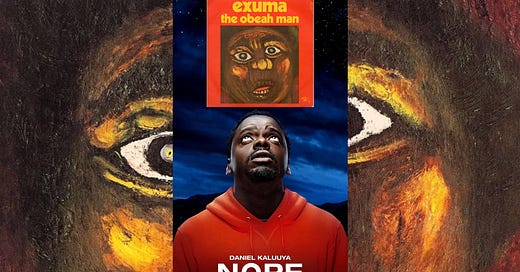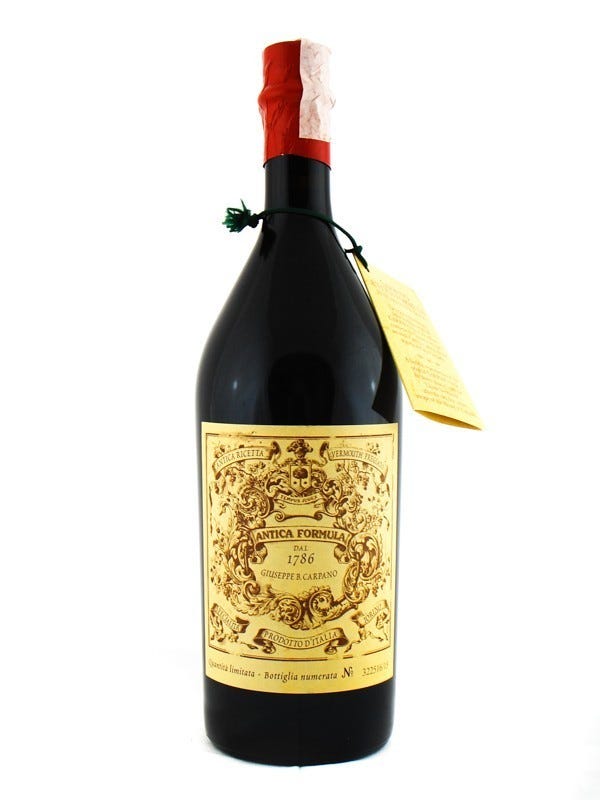That’s right, this week we’re tackling an almost-forgotten album that even took Jordan Peele by surprise! He was handed a burned CD (that’s a copy of a CD, for you kids out there, not a CD gently roasted over a fire) that said only “EXUMA” on it, and was blown away by the music.
He let the music inspire his latest movie, NOPE, and even included the album’s theme song, “Exuma The Obeah Man” in a key scene in the movie.
Dave stumbled upon this album last year, while compiling a playlist for Sundance as part of his day job chores, and was equally suprised and blown away. Turns out, Dallas has an aunt who also played the music back in the day. So it was time to turn all our readers/listeners onto this incredible album and this one-of-a-kind musician.
The show can also be found at any of the below:
UNCUT vs. FREE
If you’re a paid subscriber, you’ll see the FULL UNCUT episode above. If you’re a free subscriber, you’ll see only the shorter episode, that is available across the entirety of the winecast-o-sphere (now a word.)
UNCUT version: 94 minutes (14 minutes of additional chat! We have a whole siebar on the Peter Boyle movie, JOE, plus additional insight into Bahamian music, the history of “Obeah”, and more!)
Free version: 80 minutes
THE WINES!
Dallas’ BEETROOT WINE Recipe
Ingredients
3.25 lbs (1.5 kg) beetroots, peeled and chopped
5.5 cups cane sugar
Juice of 3 lemons
1 cup brewed black tea, cooled
1 tsp yeast nutrient
1 packet wine yeast
Filtered water (unchlorinated)
Instructions
Prepare beetroots: Peel and chop beetroots into small pieces.
Boil: Place beetroots in a pot with 3 quarts of boiling water. Simmer for 15-20 minutes until tender. Remove from heat.
Strain and Cool: Remove the beetroots from the liquid. Let the beet liquid cool completely.
Mix Ingredients: Pour the cooled beetroot liquid into a 2-gallon fermenting bucket. Add sugar, lemon juice, black tea, yeast nutrient, and enough water to make up a full gallon. Stir well.
Primary Fermentation: Cover the bucket with a towel and let it ferment out of direct sunlight for 7-10 days until fermentation slows.
Transfer to Carboy: Using a brewing siphon, transfer the liquid to a clean, narrow-neck one-gallon carboy, leaving sediment behind. Top with water if necessary to fill the carboy to the neck.
Secondary Fermentation: Cap the carboy with an airlock and allow the mixture to ferment for 2 to 3 months until fermentation stops and the wine clears.
Pasteurization: Heat the wine to 140°F (60°C) and maintain for 20 minutes to pasteurize. Cool immediately.
Aging: Bottle the wine, capping with wine corks. Allow the wine to age in the bottle for 4-6 months before drinking
Dave’s Wine
Carpano Antica Formula Vermouth
First invented in 1786 in Turin by Antonio Benedetto Carpano, it has survived in its original inimitable recipe thanks to the love and the skill of Fratelli Branca Distillerie which, with its motto “Novare Serbando” (renew, but preserve), has been able to preserve the product’s original qualities and characteristics.
Made with VANILLA from the tropical regions of Madagascar, Papua New Guinea and Tahiti. In fact, only the beans produced by the plant, and no other derivatives, are used in the recipe. Vanilla was known in Aztec times and has appetite-stimulating and digestive properties.
It also uses actual wormwood - vermouth gets its name from the steeping of the spirits in wormwood, which the Germans call "Wermwut". For a long time wormwood was outlawed in the US and is still to this day controlled somewhat by the FDA, because the Absinthe that was made from it, made people hallucinate, and they thought it was a psychotropic plant. Turns out no, it was just the stupid high alcohol of Absinthe, which was often 100-175 proof!
Sold in Total Wine, BevMo, Whole Foods, etc., it’s generally available to those who seek it out!
Listen to this episode with a 7-day free trial
Subscribe to Wine and... to listen to this post and get 7 days of free access to the full post archives.

















